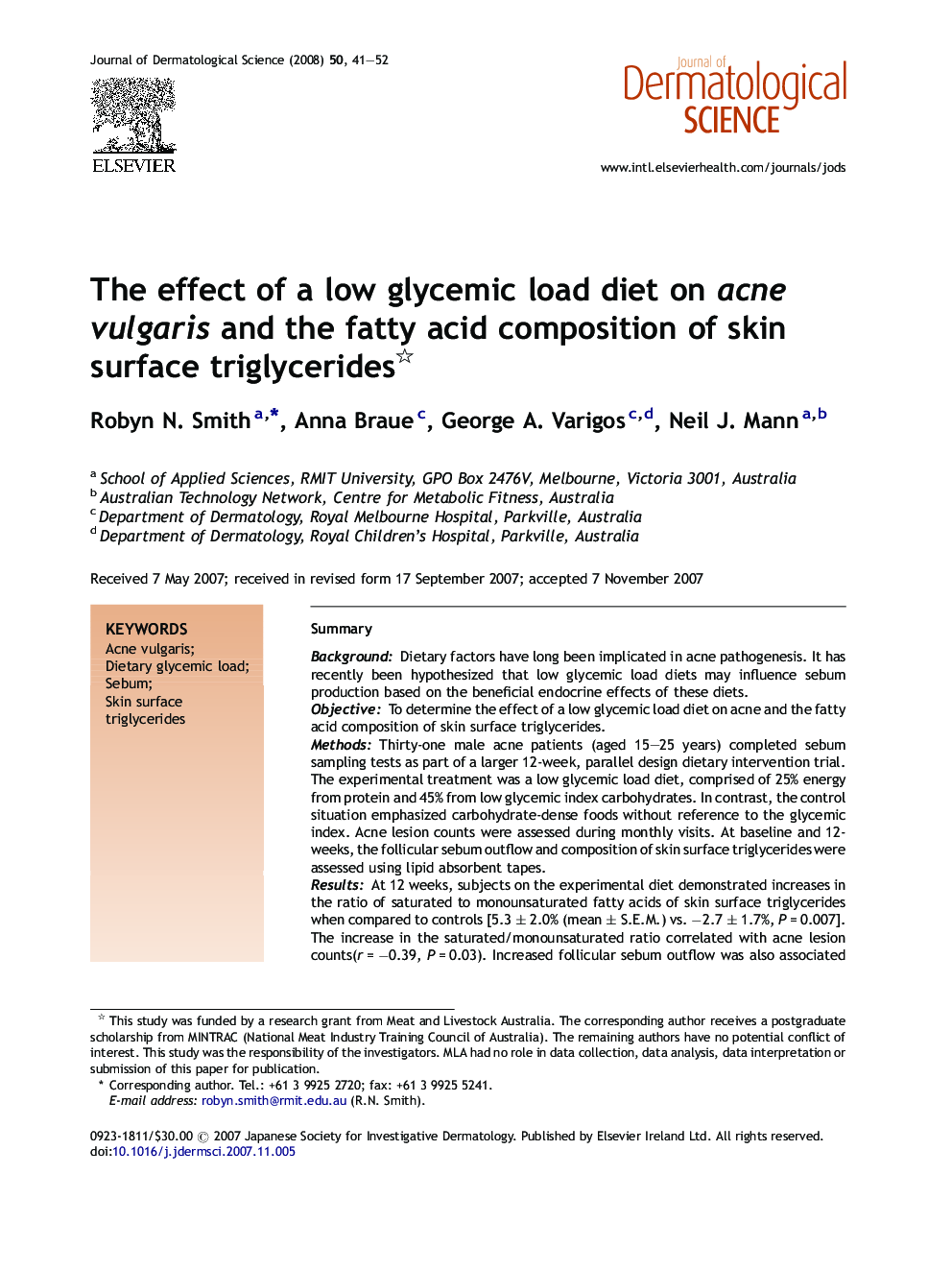| Article ID | Journal | Published Year | Pages | File Type |
|---|---|---|---|---|
| 3214213 | Journal of Dermatological Science | 2008 | 12 Pages |
SummaryBackgroundDietary factors have long been implicated in acne pathogenesis. It has recently been hypothesized that low glycemic load diets may influence sebum production based on the beneficial endocrine effects of these diets.ObjectiveTo determine the effect of a low glycemic load diet on acne and the fatty acid composition of skin surface triglycerides.MethodsThirty-one male acne patients (aged 15–25 years) completed sebum sampling tests as part of a larger 12-week, parallel design dietary intervention trial. The experimental treatment was a low glycemic load diet, comprised of 25% energy from protein and 45% from low glycemic index carbohydrates. In contrast, the control situation emphasized carbohydrate-dense foods without reference to the glycemic index. Acne lesion counts were assessed during monthly visits. At baseline and 12-weeks, the follicular sebum outflow and composition of skin surface triglycerides were assessed using lipid absorbent tapes.ResultsAt 12 weeks, subjects on the experimental diet demonstrated increases in the ratio of saturated to monounsaturated fatty acids of skin surface triglycerides when compared to controls [5.3 ± 2.0% (mean ± S.E.M.) vs. −2.7 ± 1.7%, P = 0.007]. The increase in the saturated/monounsaturated ratio correlated with acne lesion counts(r = −0.39, P = 0.03). Increased follicular sebum outflow was also associated with an increase in the proportion of monounsaturated fatty acids in sebum (r = 0.49, P = 0.006).ConclusionThis suggests a possible role of desaturase enzymes in sebaceous lipogenesis and the clinical manifestation of acne. However, further work is needed to clarify the underlying role of diet in sebum gland physiology.
